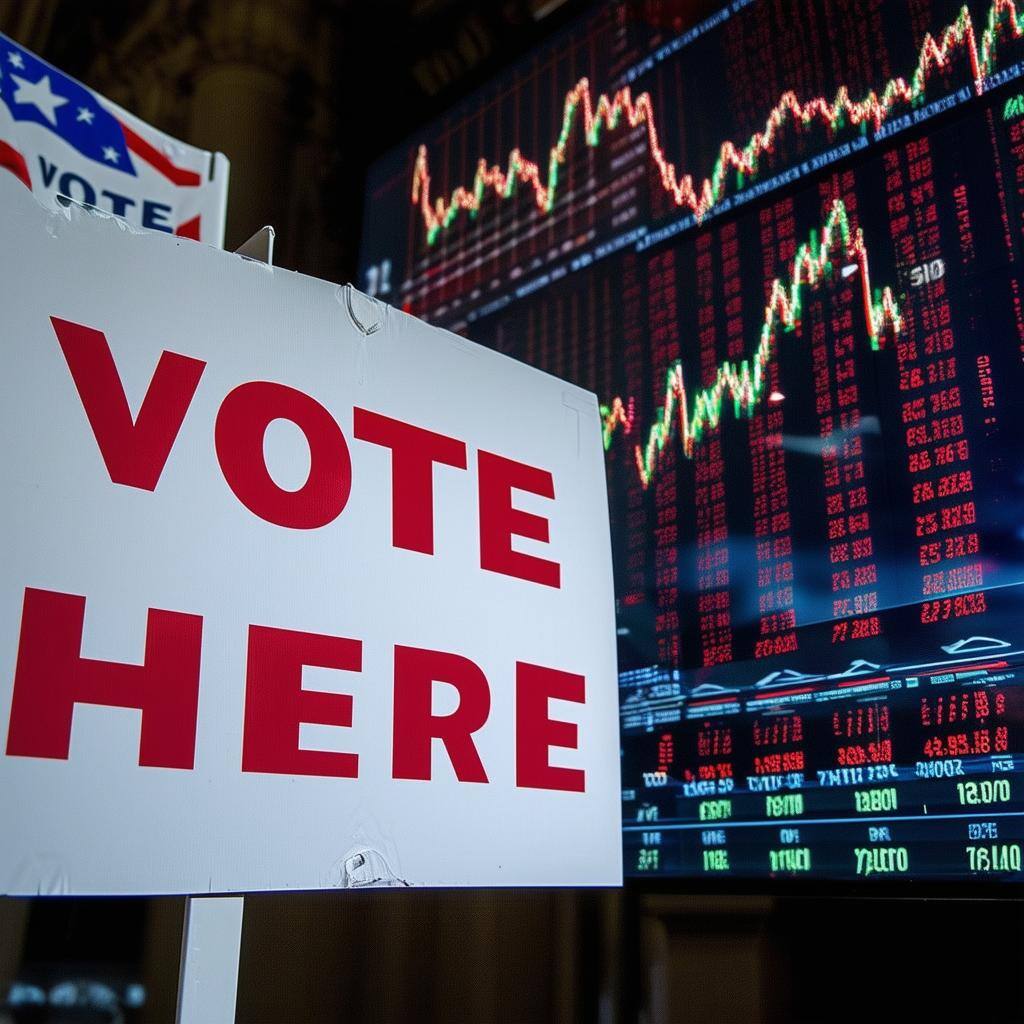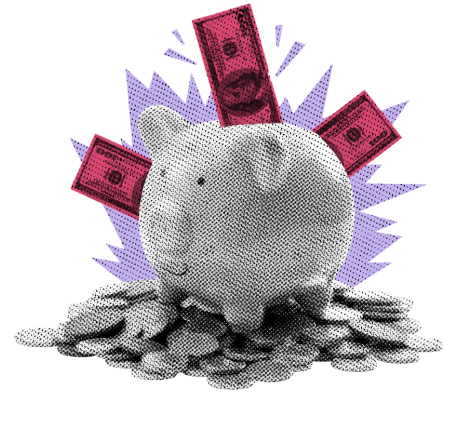
Stocks rallied on Friday as stock bulls chilled with positive results from Netflix. Investors dusted off their protective gear ahead of this week’s earnings barrage.
A ‘tail’ of two candidates. Have you heard the term “tail risk?” If you’ve hung around enough Wall Streeters or finance academics, you surely have heard the term bandied about. Tail risk for stocks refers to the extreme, rare events that exist at the far ends of a probability distribution of returns. A good way to think of it is those events which are low probability but can cause significant losses or gains to stocks. You have surely heard of a “bell curve,” or normal distribution, which has all the possible results of an occurrence fit under a neat, bell-shaped curve. Unfortunately, for stocks, that does not exist; for stocks, potential or expected returns not only fit in a non-normal curve with far-reaching tails, but also with bigger negative than positive tails. Stock return distributions are negatively skewed which means that there are higher probabilities of extreme loss than of extreme gains. Those left side,“fat tails” are also referred to as “black swan” events (two Wall Street terms in one sentence 👏). What all that jargon means is that stock investing comes with risk. I know that you know this BECAUSE I WRITE ABOUT IT ALL THE TIME. You may also know this if you have been invested in the stock market long enough to have experienced some of those “extreme” events. You know, like Black Monday in 1987, the Global Financial Crisis in 2008, or the COVID 19 Pandemic in 2020. There it is. Now you are getting it. They don’t happen every day and they are unlikely, but when they do, they usually leave a mark.
Why bring this up today? Well, we are just about 2 weeks away from election day and folks are starting to, finally, focus on what effects the election may have on the stock market. In the noisy mess of that lively discussion, I have found enough occurrences of the term “tail risk” to address it with you today. So, are there tail risks that we have to worry about with the election? I am going to try to thread the needle with this, so here goes.
Let’s just take a look at all the election promises made by both candidates in the past two weeks in which they both seem willing to give anything to any undecided voting demographic who might hand them a victory on November 5th. If you fit into any of those groups, you will probably find some sort of tax break or incentive check promised by one or both of the candidates. Way back at the beginning of the election cycle you may remember that I reminded you several times that the President is not in charge of tax policy. More specifically, the President cannot change tax laws without Congress, and Congress cannot change tax laws without the President. Moreover, the President cannot control interest rates; that is the Fed’s job. On that, we know that the Fed is lowering interest rates and probably will be for the next several quarters, so let’s leave that out of the discussion. Focusing on taxes, if you are expecting some sort of tax break, the House and the Senate would have to create legislation to do it, and the President would have to sign the legislation into law. So, those promises are possible but not probable.
Let’s be clear here for a moment. Tax cuts are in almost all cases stimulative for the economy. No matter who you are, if you have to pay less taxes, you have more to spend, and more spending is always good for the economy. So, both sides get check marks for cutting taxes. Both have targeted different groups or entities, but the real differences are how they each propose to pay for those cuts. Democrats propose to have higher earners and corporations pay for the cuts while Republicans plan to pay for the cuts with the expected growth and by cutting wasteful expenditures. So, in either of those scenarios, are there any potential black swans hiding? Well, it may not be a black swan, but it would seem that making corporations pay more taxes might cause some challenges to your portfolio. More specifically, if the Tax Cuts and Jobs Act (TCJA) of 2017 is left to expire at the end of 2024, corporate tax rates will go from 21% back to 35%. That means if neither party comes up with further legislation, corporate, after-tax profits will decline by -14%. That is negative folks, no matter how you spin it.
But let’s say that the winning candidate is able to change the course of tax policy along with Congress. Candidate and VP Harris has proposed raising corporate taxes to 28% to pay for tax cuts. That may be OK if you are the recipient of the tax cut, but not so much for the company, WHOSE STOCK IS IN YOUR PORTFOLIO, which will be at least -7% less profitable as a result. At least that is better than the -14% decrease if the 2017 act expires. Can either of those events cause market declines? I won’t answer that question, because I hope you know the answer.
What about any other of the proposals floating around out there in the “I promise” doctrines of both sides? Nope, nothing really. Even the most radical proposals on either side have low probability of becoming a reality in the short term. So, let’s sharpen our focus. Outside of what we have heard from either candidate in their promises, have we heard anything that can cause an increased probability of tail event? Well, there is the potential for an increase in local or geopolitical risk. A ramp-up of military activity in any of the ongoing conflicts can add to geopolitical risk. However, I would posit to you that those risks are already factored into the market.
Let’s come up with a base case scenario. All this election bluster is just that, bluster. Nothing changes right away. The political fingerprint of both chambers stays the same, one controlled by Republicans, and one Democrats. No matter who takes charge of the oval office, the chance of corporate tax increases remains high as the TCJA is left to expire at the end of next year. That is a risk. Wars in Ukraine and the Middle East rage on. Certainly, events in either of those conflicts can impact the market, but those potentials exist today. Now, I don’t want to oversimplify this. Trump’s proposed, far-reaching tariffs can create challenges if not implemented properly. That is indeed a risk. Similarly, a continuation of current administration DOJ and FTC policies to thwart mergers and growth can have significant, negative impacts on the market (think about a breakup of Alphabet).
So, yes, of course there are nuances that can affect the markets, but most of those still fit into the already existing, fat-tailed curve being factored into the market today. Finally, I cannot avoid the reality that any contested election result could indeed increase tail risk significantly. What, you have already factored that in? Of course, you have. So then, is any of this stuff worth swapping things around in your portfolio? What I am really saying is that while the next President will certainly have an impact on your wealth over the next 4 years, any increased “risk” that comes with the upcoming election will be in the form of volatility, which can be expected. Right now, the biggest risk to focus on is the well understood, negative tail risk that always exist in the market, especially in earnings season. THAT IS WHAT YOU SHOULD BE WATCHING THIS WEEK.
FRIDAY’S MARKET

NEXT UP
- Leading Economic Index (Sept) is expected to have declined by -0.3% after pulling back by -0.2% in August.
- Fed speakers today: Logan, Kashkari, Schmid, and Daly.
- Earnings. After the closing bell, we will hear from Alexandria Real Estate, Nucor, Medpace Holdings, W R Berkley, and Hexcel.
- The week ahead: Lots of earnings along with more housing numbers, regional Fed reports, flash PMIs, Durable Goods Orders, and University of Michigan Sentiment. Download the weekly, attached earnings and economic calendars.
DOWNLOAD MY DAILY CHARTBOOK HERE 📊
.png)

